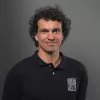With a World Championship coming in hot for 2026. I'm amazed to see how passive the community is acting...
Unified rulebook.
Reduce stress and confusion (=increased safety) even before the start of events, where too often, confusion and stress are injected through negligence or poorly made framework.
Few improvement examples:
- Unified communication tools.
The nowadays ease of instantaneous communication should not allow unclear transmission of information nor multiple last minute changes, which are factors of confusion, stress, and so safety issues.
Communication framework must be standardized in a way that it is readable, easy to understand and to get back to after few hours off the phone (proper groups, proper read only sections…).
- Unified timeline.
Organization must provide a clear event timetable, preferably unified through all events to get competitors used to it and speed up processes.
Timetable must be respected by organization, by pure professional standpoint, and by competitors being subject to penalty.
Timetable drifting imply confusion, lack of attention, late finish… All being added stress factors in an already high stress comp situation.
- Overall penalty system.
Yellow/red card. 1 yellow card = warning, 2 yellow = red, red = disqualification.
Pilot stroke by 1 yellow keeps it through the next event. Pilot stroke by 1 red gets disqualified from the actual event + the next.
Reckless/life threatening behavior penalty must start to be taken seriously (when airspaces infraction already are).
- Scoring system.
Should be indexed within the different types of events and their respective duration.
- Airspaces.
Mandatory for the organization to provide airspace file, including local specificities, no LZs, propper TPs…
- Task.
Writing of the tasks should be standardized, especially regarding mandatory landings/signboards/selfies, to avoid confusion.
- Gear check.
Propper gearcheck should be enforced to maintain fairness and safety among every competitors.
- Doping check.
Transparency should be provided regarding doping check.
...
- Read more about Unified rulebook.
- 2 comments
- Log in or register to post comments


















Comments
CIVL Delegate
Very needed. The sport raised from the outside world but now it's time for institution to catch back and define rulebook,guidelines and procedure. If the formats are left too open nothing of this will ever be possible